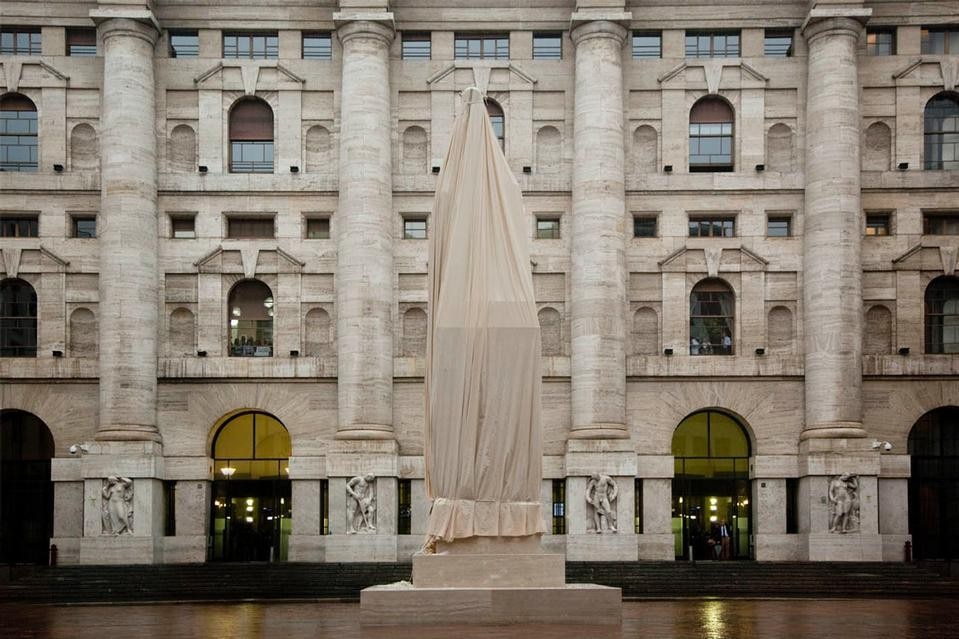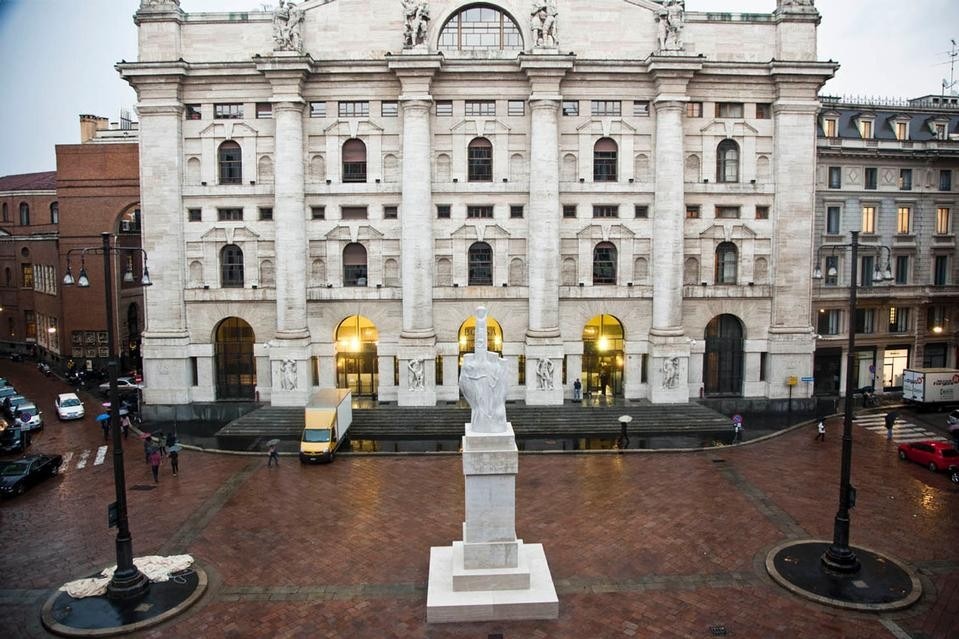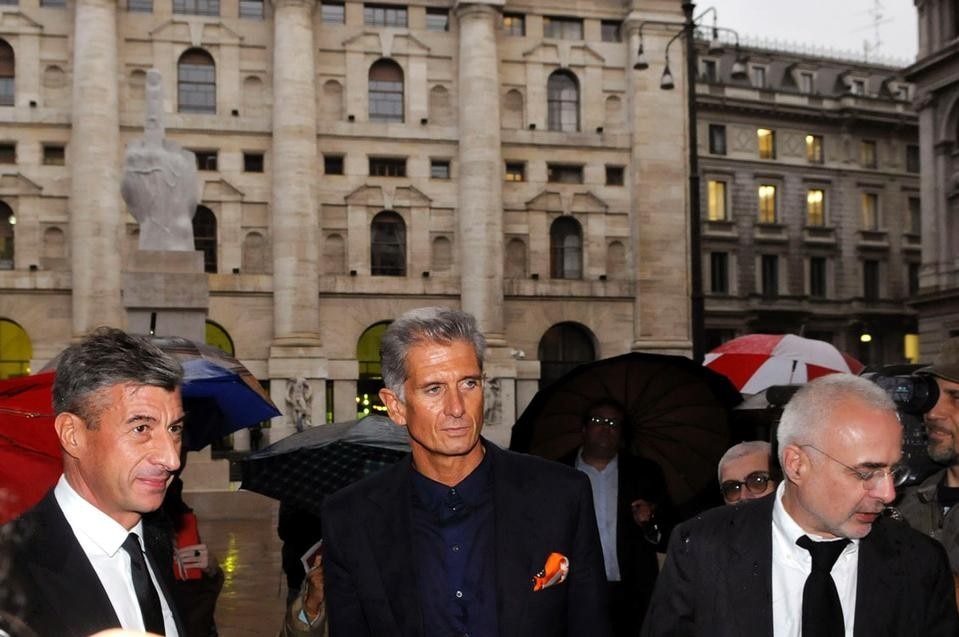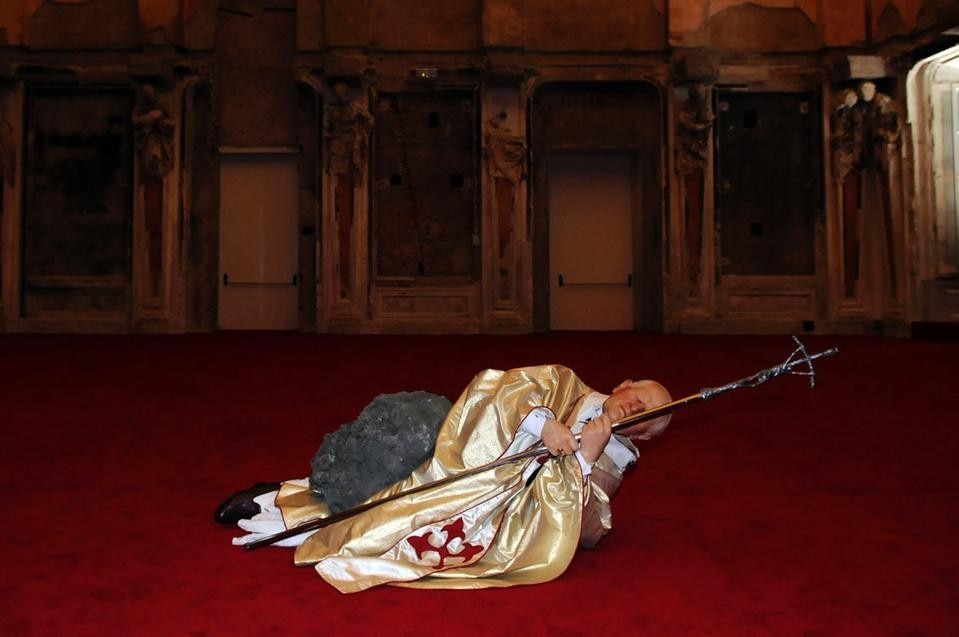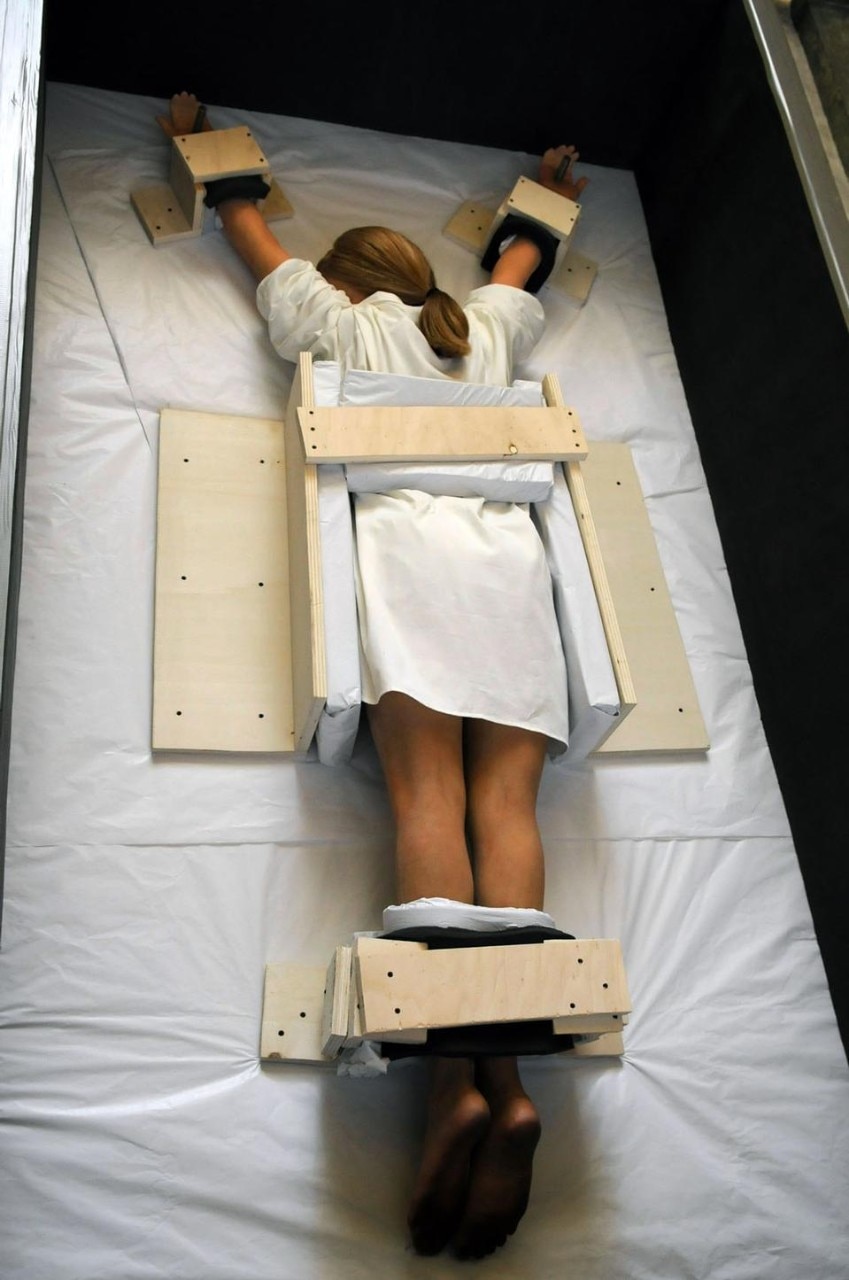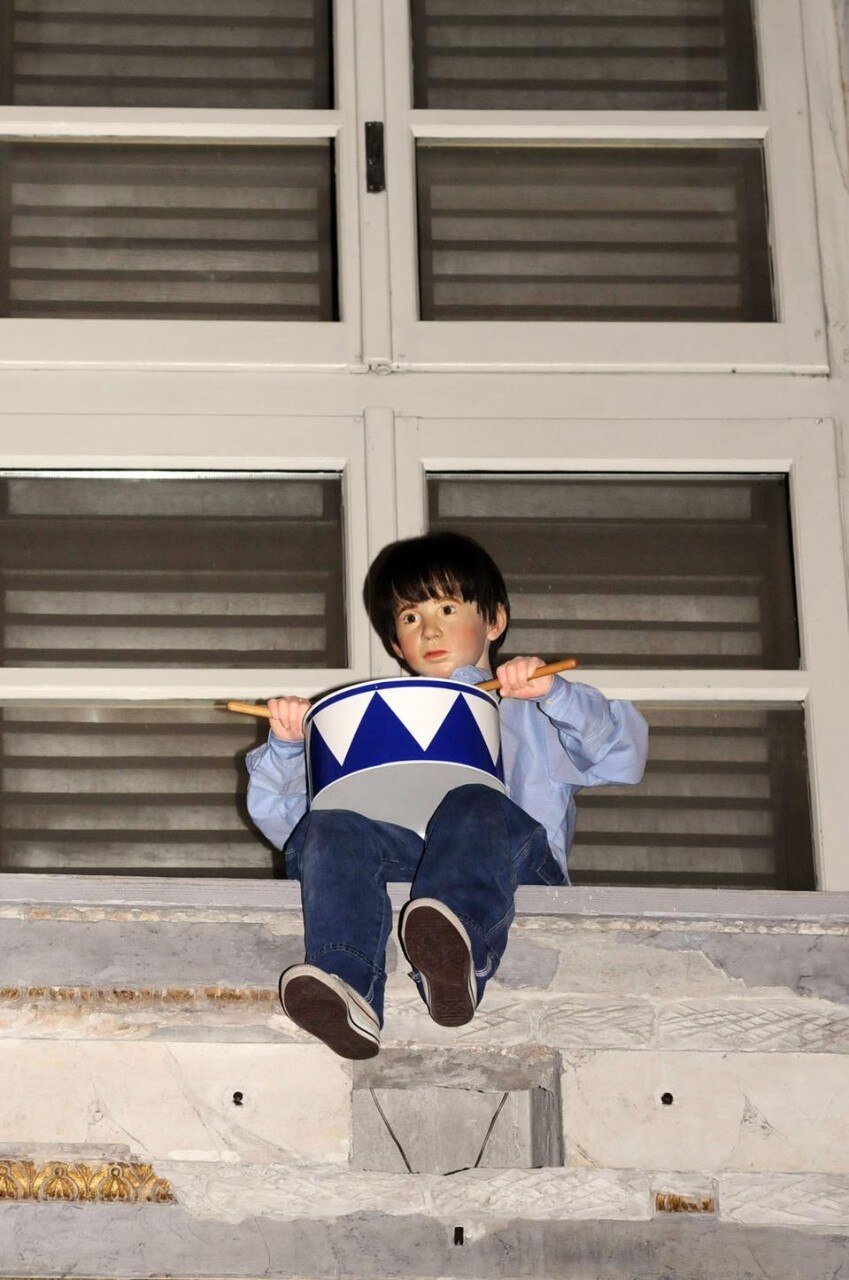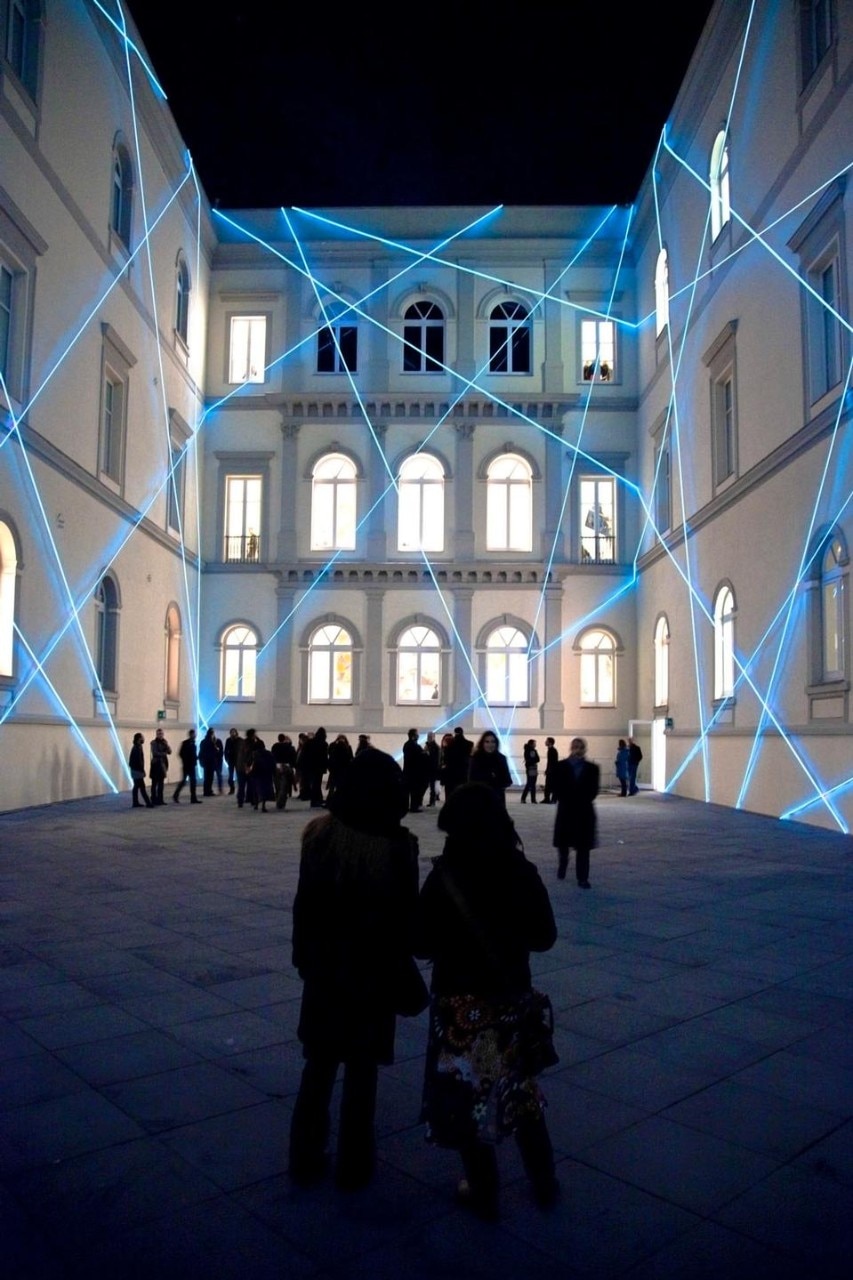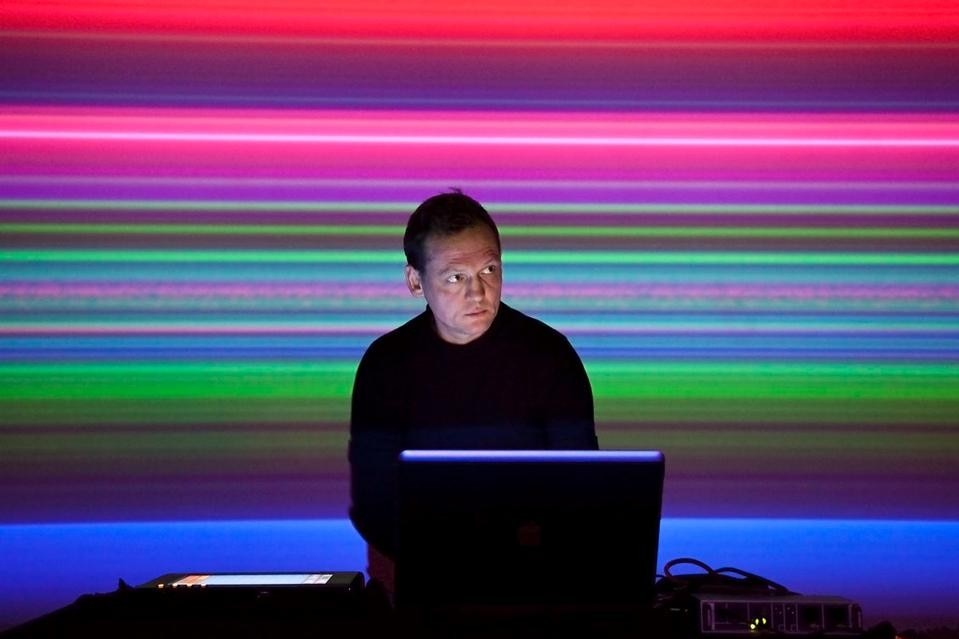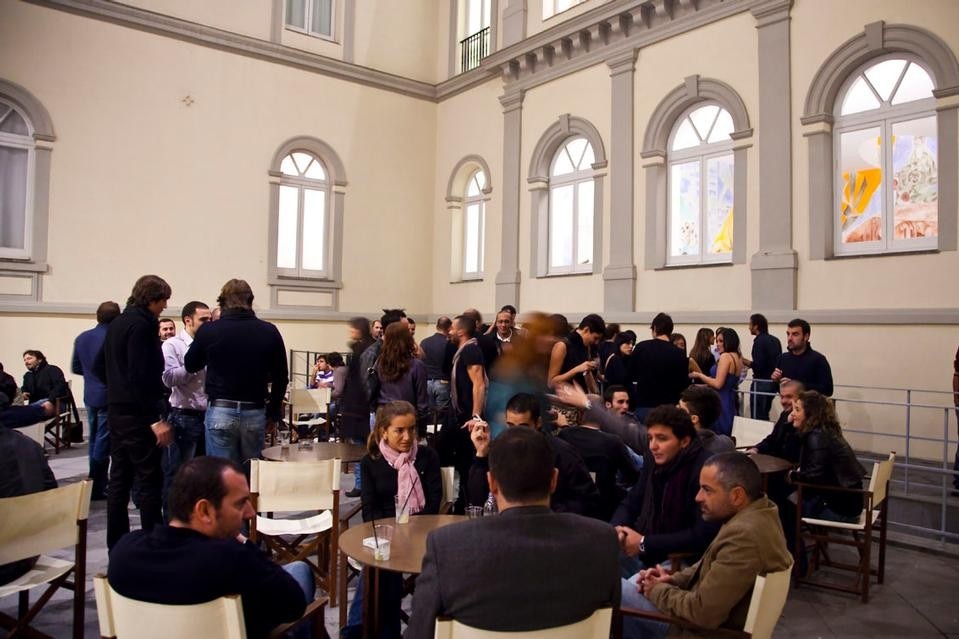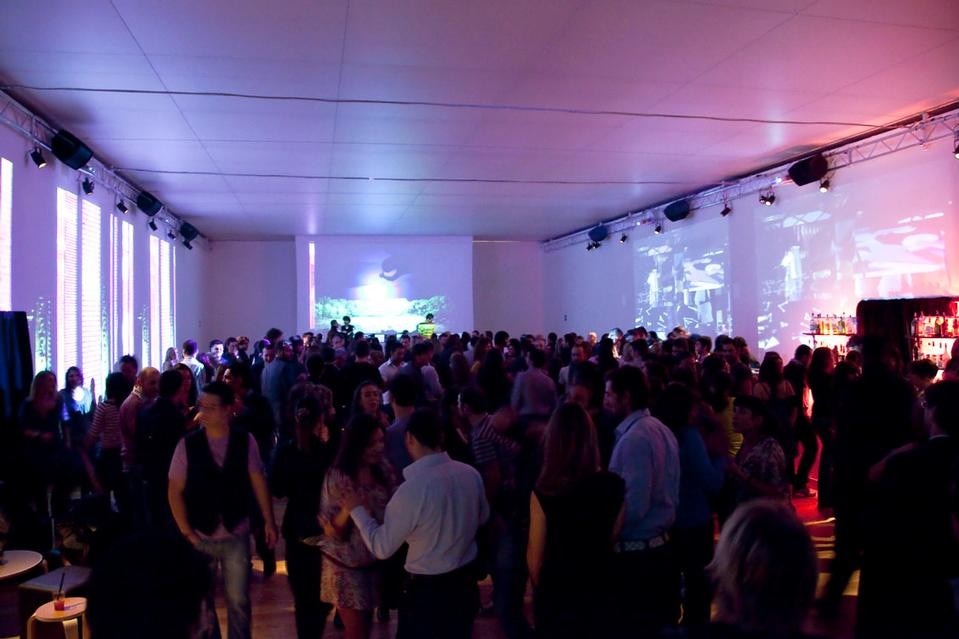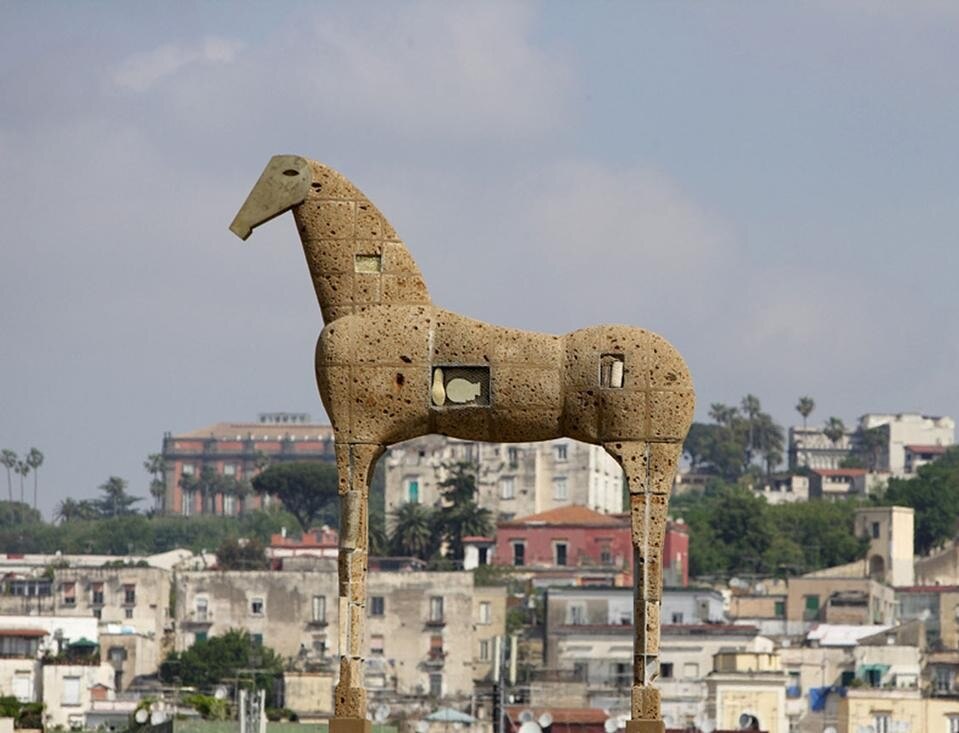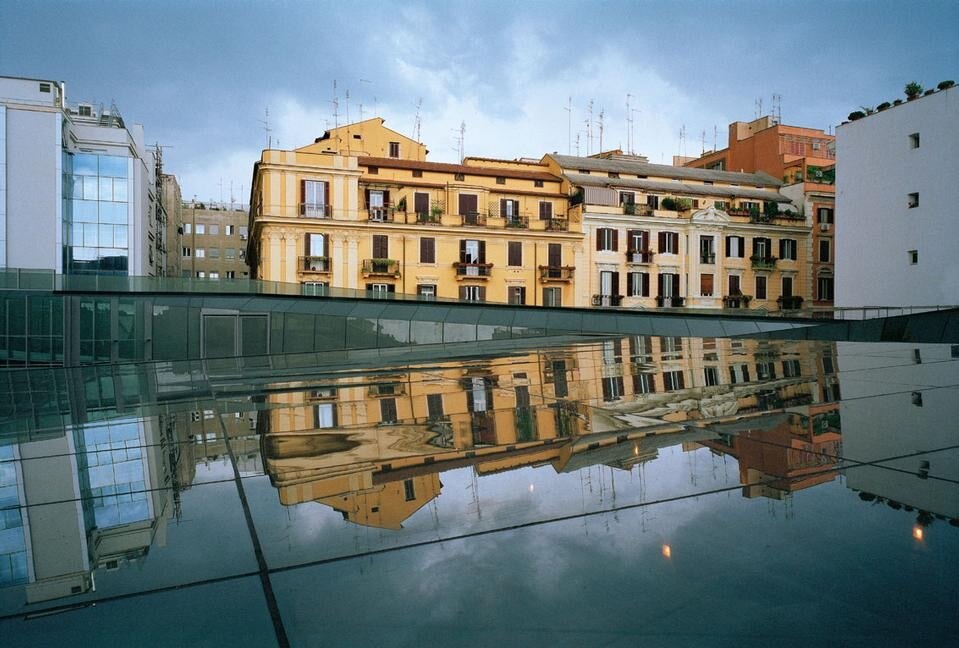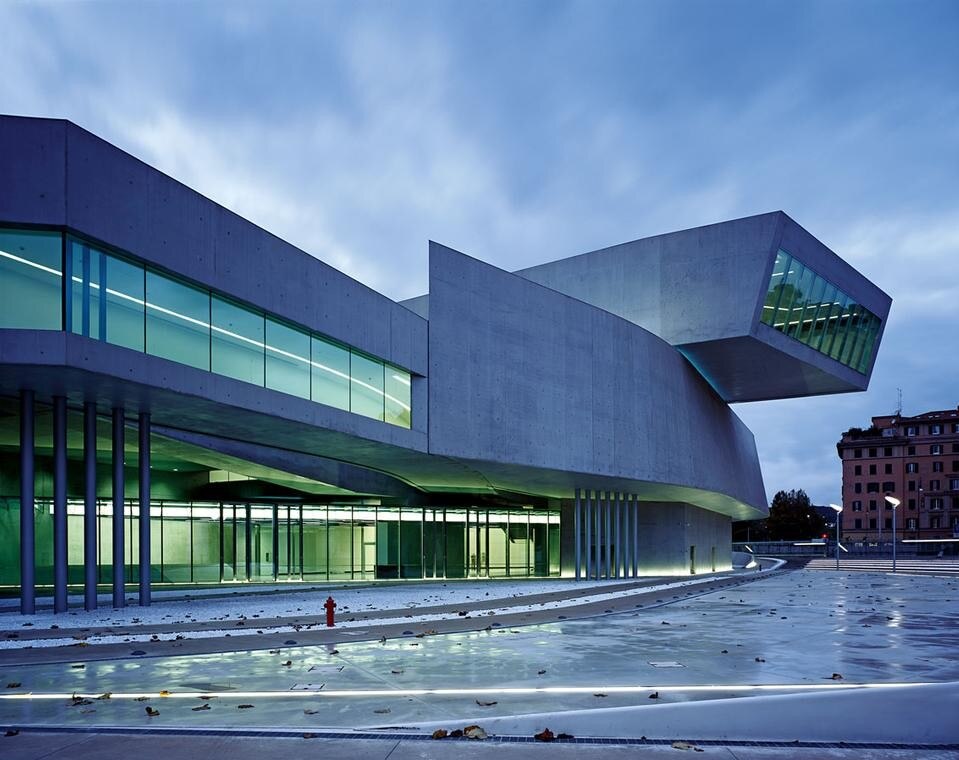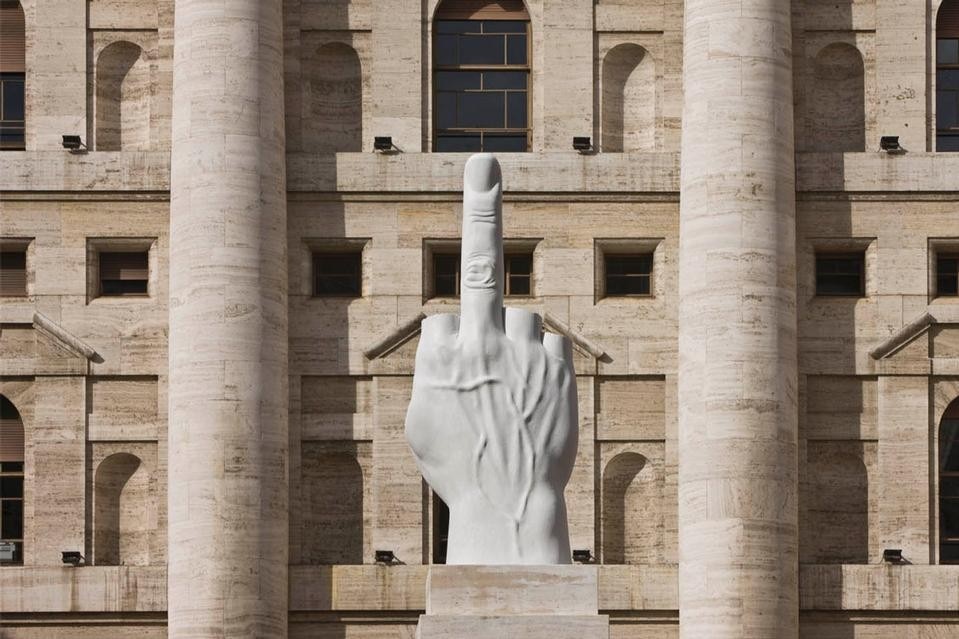Armed with cameras and mobile phones, they all pose beneath the colossal "up yours!", reproducing it with their own hands, as they would in front of the Eiffel tower or the Tower of Pisa. In the end, the heralded retrospective at Palazzo Reale, reduced to just three works (the Pope struck by a meteorite, a drummer boy and a woman crucified), again for the fear of scandal expressed by the Mayor and the city council, has turned out to be a masterpiece. As Cattelan himself admits, "My best works have originated from unexpected occurrences that I have had to turn into positives. If I had sat down and thought about it, I couldn't have come up with such a perfect synthesis for Palazzo Reale: father, son and mother. An autobiographical and dysfunctional holy family."
To avoid upsetting the city's institutions, they even asked the Curia of Milan for its opinion and, yet again, the feared scandal did not materialise. Instead, visitors perceive the sanctity of the prostate Pope exhibited along with a child who looks autistic, distant and stubborn as he senselessly beats a drum. Two forms of solitude to which, in the next room, is added that of a woman crucified.
The outcome for the City of Milan is quickly calculated. Decades have passed since the city staged an artistic operation of such international resonance, and at virtually zero cost because Cattelan paid for the statue (and its installation) and just 100,000 Euros were spent for the exhibition in Palazzo Reale (transport, insurance and custodians). A drop in the ocean compared with the 4,200,000 Euros spent for exhibitions in 2009. What is more, the whole operation was based on a direct relationship between the artist and the City of Milan (via the councillor for culture Massimiliano Finazzer Flory, who promoted and defended it), so it is not branded by any of those companies that organise pseudo-artistic events and, at least in Milan, serve up mainly shoddy, second-class works with purely commercial objectives. So, what is lacking in administrations like that of Milan? Farsightedness, a gaze that sees beyond. In other words, the ability to plan and have a concept of itself and its institutional work that is not just that of managing a block of flats, as the previous mayor of Milan liked to say. Can local government in one of the most solid Western countries be afraid of an artist as if we were still under the Fascist dictatorship, a Socialist regime or in Korea? Even in China they have realised that censoring figurative art does more harm than the message they are trying to black out. In Italy, on the other hand, contemporary art still instils fear, far, far more so than literature, the press or films. On the one hand, this is to the credit of the figurative arts, which seem to retain a power that has waned in the other forms of expression; but, on the other, the censorial and cowardly approach shown by the Milan administration could have been damaging, as they are well aware in Naples.
In the Neapolitan city, censorship has fallen on the Madre museum, a rare outpost of culture and civilisation in a southern Italy consumed by sick politics. In an attempt to open up to young people and the social void of city, Madre was the first place in Italy to come up with Apemadre, or cocktails in the museum, and Madrenalina, a disco evening. It opened its doors to the theatre, videos and photography. It reshuffled the generations of museum-goers. It cured a part of that ill body that is the city. So, what does the new regional government do? It cuts its funds, to the extreme of leaving it without light. Driven by a categorical imperative to dismantle everything done by the previous left-wing administration, good and bad, last year the new right-wing council started trying to trip up Madre by sending the Carabinieri police to break up a Madrenalina evening and send the director of Madre, Eduardo Cicelyn, to the police station for questioning by the financial police following a parliamentary question by the deputy Laboccetta. In the end, the Court of Review had the final word on the seriousness of the inquiry by exposing the political persecution perpetrated against the director and the Madre museum. The defeat that led to the resumption of Apemadre and Madrenalina was not, however, enough and the Regione Campania decided to take more drastic action and not pay its electricity bill (editor's note: read the appeal Save Madre). The Madre accounts are in order, nothing improper and no insolvency, but the Regione Campania's coffers are empty and it decided to scrape a little money together by removing the oxygen from Madre.
Mimmo Paladino wrote an aggrieved letter to Corriere della Sera announcing a sensational protest in favour of Madre and the Trianon Viviani theatre in Forcella. He will place a black drape over his large work due to be inaugurated in the new rehearsal room in the courtyard of the Teatro San Carlo on 2 October.
It is clear to everyone that here, as in Milan, it is all pure politics. Yet, it would be all too easy to draw conclusions and say that everyone knows that the political right and culture have never got on in Italy. What happened in Rome with the opening of Zaha Hadid's Maxxi and Odile Decq's Macro shows the opposite. Yes, both designs originated under Walter Veltroni's left-wing administration and, yes, Vittorio Sgarbi and the current minister for culture of the centre-right government, Sandro Bondi, tried to "normalise" Maxxi and turn it into a temple for the middle classes that believe art is only figurative painting. But, after the first sparks had started to fly, everyone took a step back because they realised the worth of culture, if only in terms of image and finance. If any conclusion is to be drawn from Milan's Cattelan controversy, it is that art is not a dead language, despite Hegel's prophecies, despite the shattered utopias of the avant-gardes and despite the ideologies it has often served. The fact that art is still alive is demonstrated by the politicians' fear. Who knows, maybe this fear is not so bad for the power of art.
Francesca Bonazzoli
